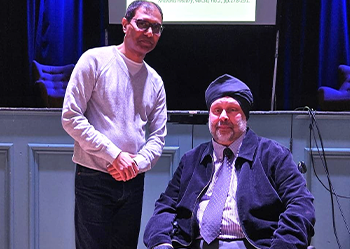University News Last updated 10 September 2024

Birmingham’s legacy as the birthplace of British Bhangra music is being celebrated by a new collaboration involving Birmingham City University (BCU).
The University has teamed up with experts in South Asian popular culture to map 40 years of heritage – from 1970’s influences to contemporary trends.
Narinder Singh Winnie, a former musician who represents the British Bhangra music industry in the West Midlands, said: “Bhangra music is huge right now.
“It’s been popularised on a global scale by artists such as Diljit Dosanjh, who is selling out massive arenas in the USA. But not many people know it originated here in the Black Country.
“I want to educate people about how the scene here developed and the major influences.
"Working with BCU will ensure we get this right and create a complete map of our legacy.”
Narinder joined experts and creatives from the Europe, India, Pakistan and the USA at a recent conference - ‘Bees Saal Baad’ or ‘20 years later’ - to network and share ideas. The British Bhangra and Birmingham project will be led by Professor Rajinder Dudrah at BCU.
Delegates explored issues of gender, LGBTQ+, disability, the global movement of people from South Asia – focusing on India, Pakistan, Bangladesh, Nepal, Sri Lanka, as well as Birmingham, which is home to many people of South Asian heritage.
The conference was also a chance for delegates to review two decades of the pioneering South Asian Popular Culture journal, which was founded 21 years ago.
Dr Rajinder Dudrah, Professor of Cultural Studies and the Creative Industries at BCU, explained why the journal, which champions all forms of South Asian popular culture, began.
“I was a PhD researcher giving a paper on Indian cinema and British Bhangra music when I was approached by a publisher from Taylor and Francis,” he said.
“They asked if I had considered developing the idea. At the time, I hadn't, but I was aware that not many journals catered to the South Asian area or movement of people.
“I became a founding co-editor of the journal, alongside Professor Gita Rajan and the late Moti Gokulsing. We work with colleagues from the UK, USA, Europe, India, and South Asia on every issue.”
Now, 21 years, 22 volumes, and 15 special editions later, the journal brings together like-minded academics, artists, and researchers via subscriptions from 3,000 institutions worldwide each year. In 2023 alone the journal was downloaded 45,000 times.